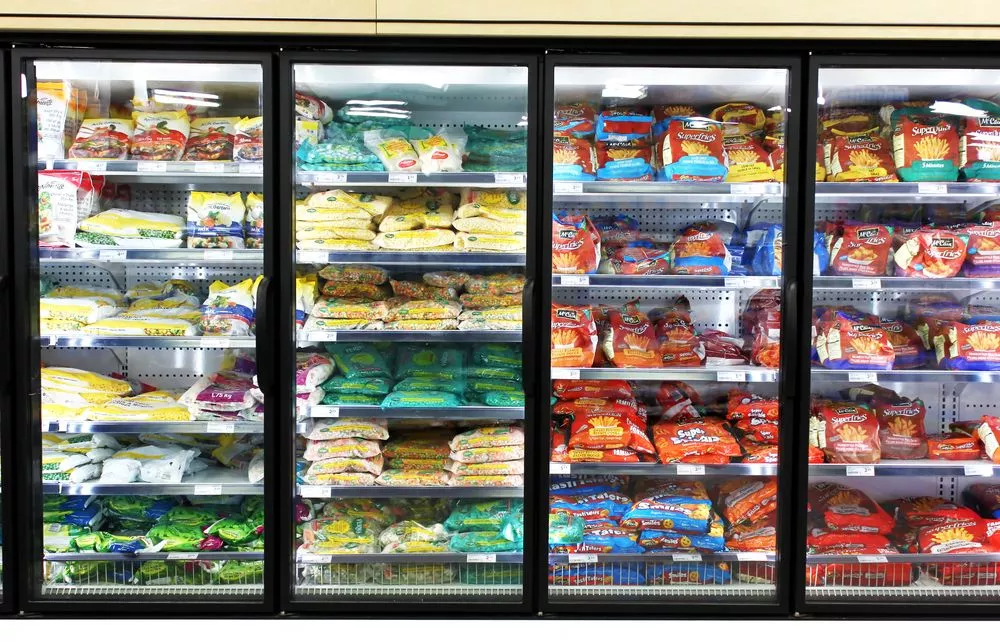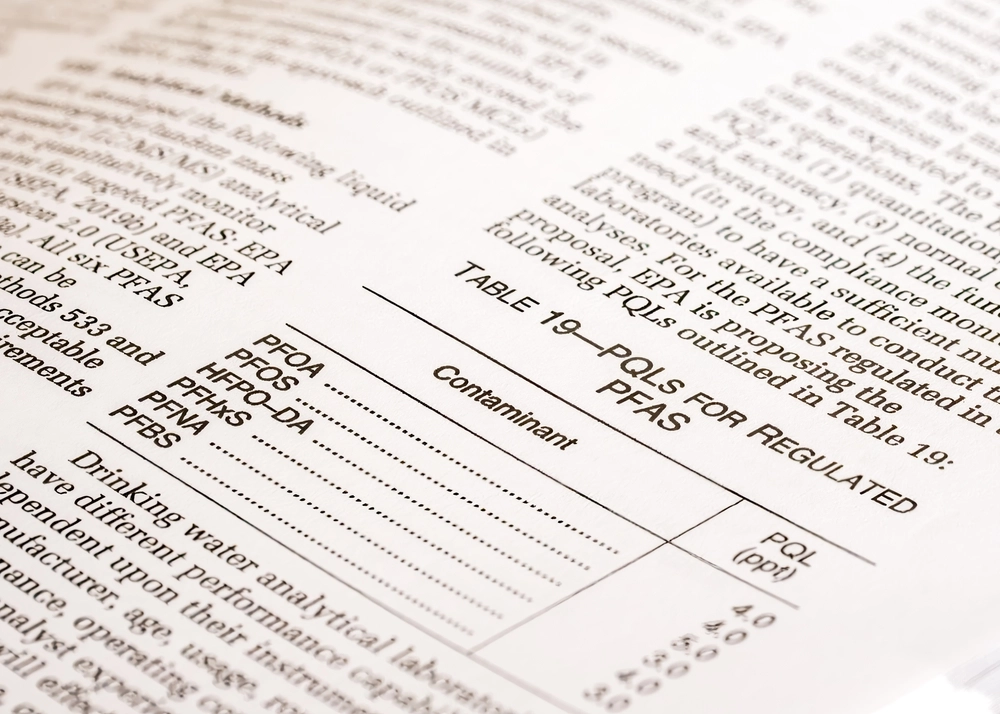6 Key PFAS Regulations in Food Packaging Explained
Staying ahead of regulatory requirements for product packaging is critical for businesses in the food industry. One of the most pressing issues in recent years has been the use of PFAS (pronounced “PEA-fass”). These chemicals are prized for their grease- and water-resistant properties but are increasingly scrutinized for their potential health and environmental risks. With consumer awareness on the rise, companies must navigate a complex and evolving regulatory landscape to maintain trust and ensure product safety.
Understanding the regulations surrounding PFAS is not just about compliance—it’s about positioning your brand as a leader in safety and sustainability. Governments worldwide are implementing stringent rules to limit the use of PFAS in food packaging.
These regulations aim to mitigate the health risks associated with these persistent chemicals and reduce their environmental impact. For businesses, this means adapting to new standards and exploring safer alternatives to PFAS-containing materials, especially when partnering with a sustainable packaging manufacturer.
This article lists key PFAS regulations in North America and beyond. By understanding these regulatory frameworks, brands can make informed decisions, navigate the challenges and opportunities, stay compliant, and lead the way in producing safer food packaging solutions.
What Is PFAS in Food Packaging?
PFAS, or per- and polyfluoroalkyl substances, are a group of man-made chemicals widely used in various industries since the 1940s. They are known for their water- and grease-resistant properties, making them valuable in numerous applications, including food packaging.
In food packaging, PFAS are commonly used to create grease-proof and water-resistant barriers. These chemicals can be found in items like microwave popcorn bags, fast food wrappers, pizza boxes, and bakery papers. Their ability to repel oil and water helps prevent grease and moisture from soaking through the product packaging, thus maintaining the integrity of the food inside.

However, the use of PFAS chemicals in food packaging has raised significant health concerns. These chemicals are persistent in the environment and human body, meaning they do not break down easily and can accumulate over time. Studies have linked PFAS exposure to health issues that include liver damage, thyroid disease, decreased fertility, high cholesterol, obesity, hormone suppression, and cancer.
The presence of PFAS in food packaging is particularly concerning because these chemicals can migrate into food, especially when exposed to heat. This means that when consumers heat food in PFAS-containing packaging, there is a risk of ingesting these harmful substances.
PFAS Regulations for Food Packaging in North America
As awareness of the potential health risks of PFAS has grown, there has been increasing pressure on regulatory bodies and manufacturers to limit their use in food packaging. In North America, countries such as the United States and Canada are taking steps to address these potential health risks. Here is an overview of the key regulations in place.
1. Federal PFAS regulations in the United States
At the federal level, the U.S. Food and Drug Administration (FDA) oversees the safety of food packaging materials, including those containing PFAS. The FDA has set specific guidelines for the allowable levels of PFAS in food contact substances. These guidelines are based on toxicological data and are designed to ensure that any exposure to PFAS through food packaging remains within safe limits.
In recent years, the FDA has conducted a comprehensive review of PFAS used in food packaging. As a result, several manufacturers voluntarily phased out the use of certain long-chain PFAS compounds, which are known to be more persistent and bioaccumulative. The FDA continues to monitor the presence of PFAS in food packaging and may update regulations as new scientific data becomes available.

2. State-specific PFAS regulations in the United States
In addition to federal regulations, several states have implemented their own PFAS regulations to address local concerns and provide additional protection to consumers. Notable examples include:
- California – has been at the forefront of regulating PFAS through its Safer Consumer Products program. This initiative requires manufacturers to seek safer alternatives to harmful chemicals in consumer products, including food packaging. California has also enacted legislation banning the use of certain PFAS in food packaging materials.

- Washington – the state has passed laws that ban the use of PFAS in food packaging. These regulations are part of a broader effort to reduce toxic chemical use in consumer products and protect public health.
- Maine – implemented a phased ban on the sale of food packaging with intentionally added PFAS. This regulation aims to eliminate PFAS from food packaging by 2030, with interim measures to reduce their use in the meantime.
3. Regulations in Canada
In Canada, Health Canada and the Canadian Food Inspection Agency (CFIA) regulate the use of PFAS in food packaging. Canada’s regulatory framework is similar to that of the United States, with guidelines based on scientific assessments of the potential health risks associated with PFAS exposure.

Key actions include:
- Health Canada guidelines – has set specific limits for PFAS in food contact materials. These guidelines are regularly updated to reflect relevant scientific knowledge and risk assessments. The department also conducts ongoing research and monitoring to assess PFAS presence in food packaging and its potential health impacts. They collaborate with international partners to stay informed about global developments and regulatory best practices.
- CFIA enforcement – the CFIA ensures that food packaging materials comply with Health Canada’s standards. The agency conducts inspections and monitoring to verify that PFAS levels in food packaging are within the established safety limits. The CFIA also collaborates with Health Canada to address any emerging issues related to PFAS in food packaging and to implement new safety measures as needed.
The Role of International Collaboration
Both the United States and Canada participate in international efforts to address PFAS contamination and develop harmonized regulatory standards. Collaboration with organizations such as the World Health Organization (WHO) and the Organisation for Economic Co-operation and Development (OECD) helps North American regulators stay aligned with global best practices and emerging trends in PFAS regulation.

International PFAS Regulations for Food Packaging
The regulation of PFAS in food packaging is a global concern, with various countries and regions taking significant steps to address the potential health risks associated with these chemicals. Here is an overview of key international PFAS regulations:
4. EU PFAS regulations
The European Union (EU) has implemented some of the most stringent regulations on PFAS. The EU’s approach is characterized by its precautionary principle, which emphasizes the need to prevent potential harm even in the absence of conclusive scientific evidence. Key regulatory actions include:
- Registration, Evaluation, Authorisation, and Restriction of Chemicals (REACH) – under the REACH regulation, several PFAS chemicals are classified as substances of very high concern (SVHC). This classification requires companies to seek authorization before using these substances and to explore safer alternatives.
- Food contact materials regulations – the EU has established specific limits for PFAS in food contact materials to minimize migration into food. These limits are regularly reviewed and updated based on new scientific data.
- Persistent Organic Pollutants (POPs) – the EU has included specific PFAS compounds, such as perfluorooctanoic acid (PFOA), in the POPs Regulation. This aims to eliminate the production and use of persistent organic pollutants. It also mandates the phase-out of these substances and promotes the development of safer alternatives.
5. PFAS regulations in Australia
Australia has also taken steps to regulate PFAS in food packaging and other consumer products. The country’s regulatory approach includes:
- National Industrial Chemicals Notification and Assessment Scheme (NICNAS) – oversees the regulation of industrial chemicals, including PFAS. The scheme requires manufacturers and importers to provide safety data and conduct risk assessments for PFAS-containing products.
- Food Standards Australia New Zealand (FSANZ) – sets standards for food contact materials in relation to the use of PFAS in food packaging. The agency conducts risk assessments and provides guidance on the safe use of these chemicals.
6. Other international PFAS regulations
Other countries have implemented or are in the process of developing regulations to address PFAS in food packaging. Notable examples include:
Japan
The Ministry of Health, Labour and Welfare (MHLW) in Japan is responsible for regulating food safety standards, including those related to food contact materials. In 2022, the ministry proposed a ban on 56 substances related to perfluorooctanoic acid (PFOA, CAS 335-67-1). These substances were designated as Class I Specified Chemical Substances controlled under the Chemical Substance Control Law (CSCL).
PFOA, a type of PFAS, is heavily regulated and identified as a persistent organic pollutant under the UN’s Stockholm Convention. This regulatory update will bring Japan’s regulations in line with the standards set by the convention.

China
China has also implemented policies and standards to limit and measure PFAS in various industries. For the food industry in particular, the standards GB 9685-2016 and GB 4806.10-2016 exclude PFAS substances from the list of allowed additives in food contact materials. The standard GB 31604.35-2016 provides guidance on measuring PFOS and PFOA in food contact materials.
Embracing Safer Packaging Solutions
As governments worldwide continue to tighten restrictions on these chemicals, staying informed and compliant is not just a legal requirement but a competitive advantage. Understanding PFAS health effects and the regulations designed to mitigate them will position your business as a leader in safety and sustainability.
Adapting to these regulations involves not only adhering to new standards but also exploring innovative alternatives to PFAS-containing materials. Companies that proactively address these challenges will be better equipped to meet consumer demands for safer, environmentally friendly products and maintain their reputation in a rapidly evolving market.
Meyers provides custom packaging solutions for brands to stay ahead and ensure food packaging solutions meet the highest standards of safety and sustainability. Reach out to the team of experts, learn how to navigate packaging complexities, and lead your brand to a safer, greener future.

